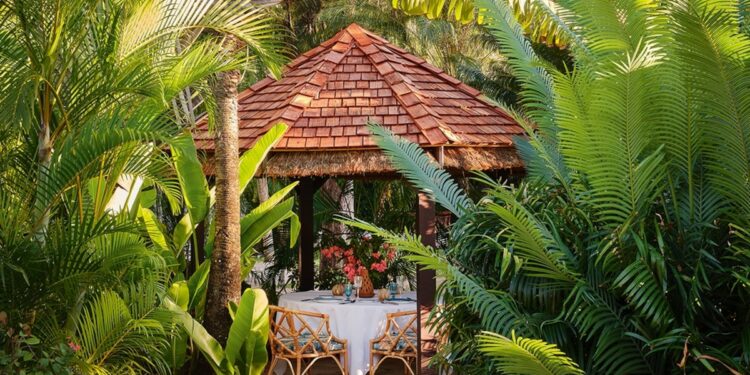ItтАЩs too late to turn back now тАФ the priest is waiting for us. I shut my eyes and grip the seat belt as my guide and I rattle down the steep, rocky mountainside. WeтАЩre heading towards the isolated Mount Kailash Rejuvenation Centre, a winding 30-minute drive from St LuciaтАЩs capital, Castries, and, after what feels like a mile-long bumpy descent, I can finally open my eyes again. The Honourable Priest Kailash, the founder of the centre, greets us with freshly cut coconuts and we sip the sweet, cool water from inside. тАЬBlessed,тАЭ he says, motioning us towards one of the herb gardens. тАЬWelcome to Mount Kailash.тАЭ
Before settling on the secluded peak where his farm stands, Priest Kailash studied medicine and built a reputation as a skilled herbal physician. тАЬWhen I came out of medical school, there was a taboo towards herbs,тАЭ he explains. тАЬPeople would dismiss the use of them as тАШvoodooтАЩ, because the knowledge had been lost and therefore misunderstood.тАЭ This is changing, however, and the herbal medicine school at the rejuvenation centre teaches students from all over the world about the use of nature in healing. Most visitors, I learn, come here seeking various forms of restoration, both physical and spiritual, with wellness programmes carefully tailored to each individual.
Mount Kailash Rejuvenation Centre specialises in holistic healing.
Photograph by Hon Prophet Anu
The hills surrounding the centre are shrouded in a dense blanket of trees and ferns, a waterfall gurgles in the distance and warblers whistle as they dart from plant to tree. As we walk through the flourishing garden, Priest Kailash points out some of the herbs and explains their uses. тАЬCarpenterтАЩs bush,тАЭ he says, snatching a handful. тАЬItтАЩs one of the best for hormonal balancing, PMS and menopausal problems тАФ it helps to balance your oestrogen and progesterone levels. ItтАЩs also good for the circular thyroid system.тАЭ
And there are plenty more plants to learn about. The feathery leaves from the king of the forest bush are antimicrobial, antifungal and used to relieve skin issues, while ginger is used to help with nausea and aid digestion. Lemongrass, I discover, can decrease inflammation, is used to help lower blood pressure and can reduce anxiety, pain and fever, while cocoa has effective antioxidant and anti-inflammatory properties when consumed or applied to the skin.
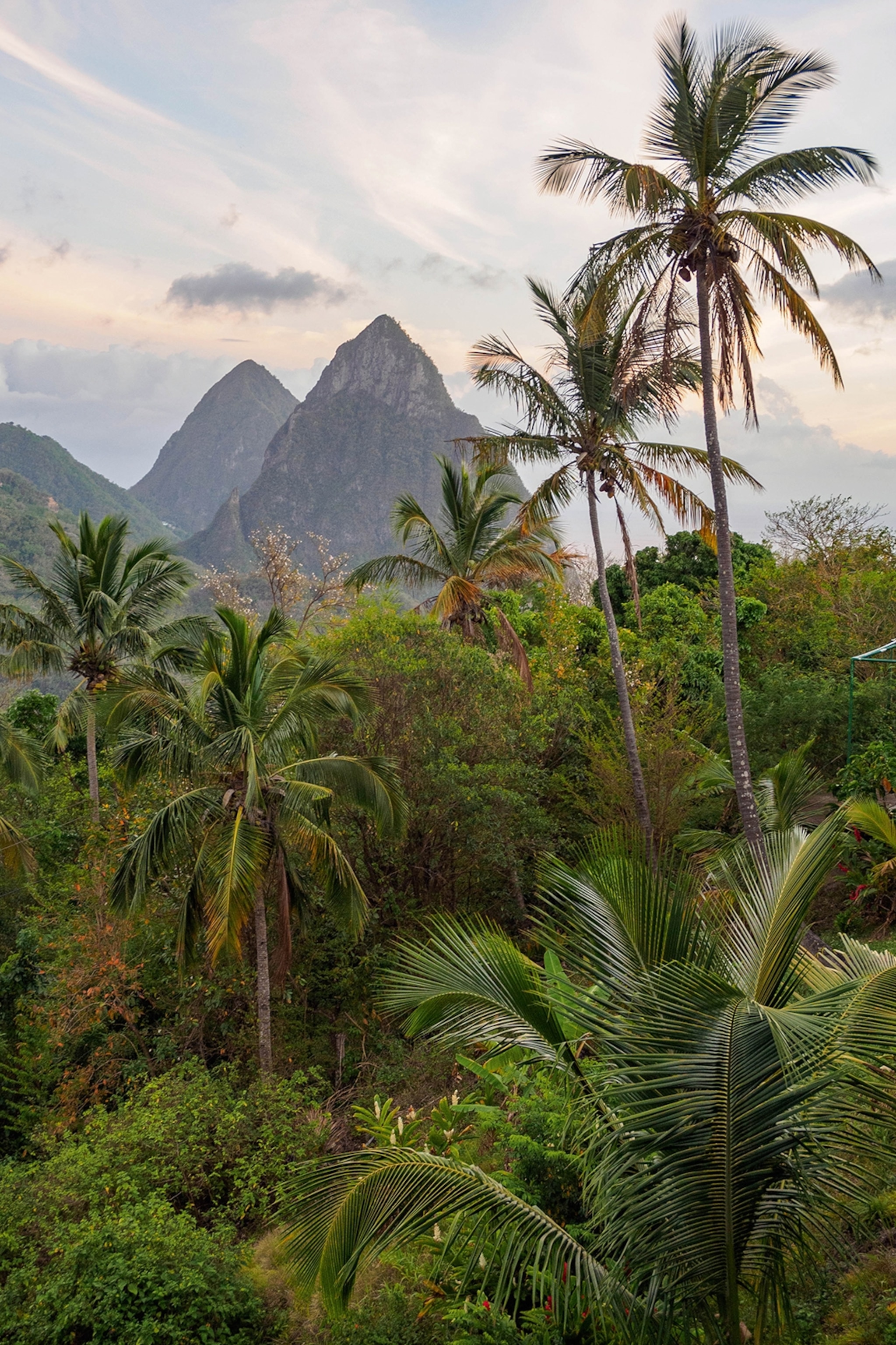
St Lucia has densely grown-over hills with a flurry of medicinal plants.
Photograph by Brandon Rosenblum, Getty Images
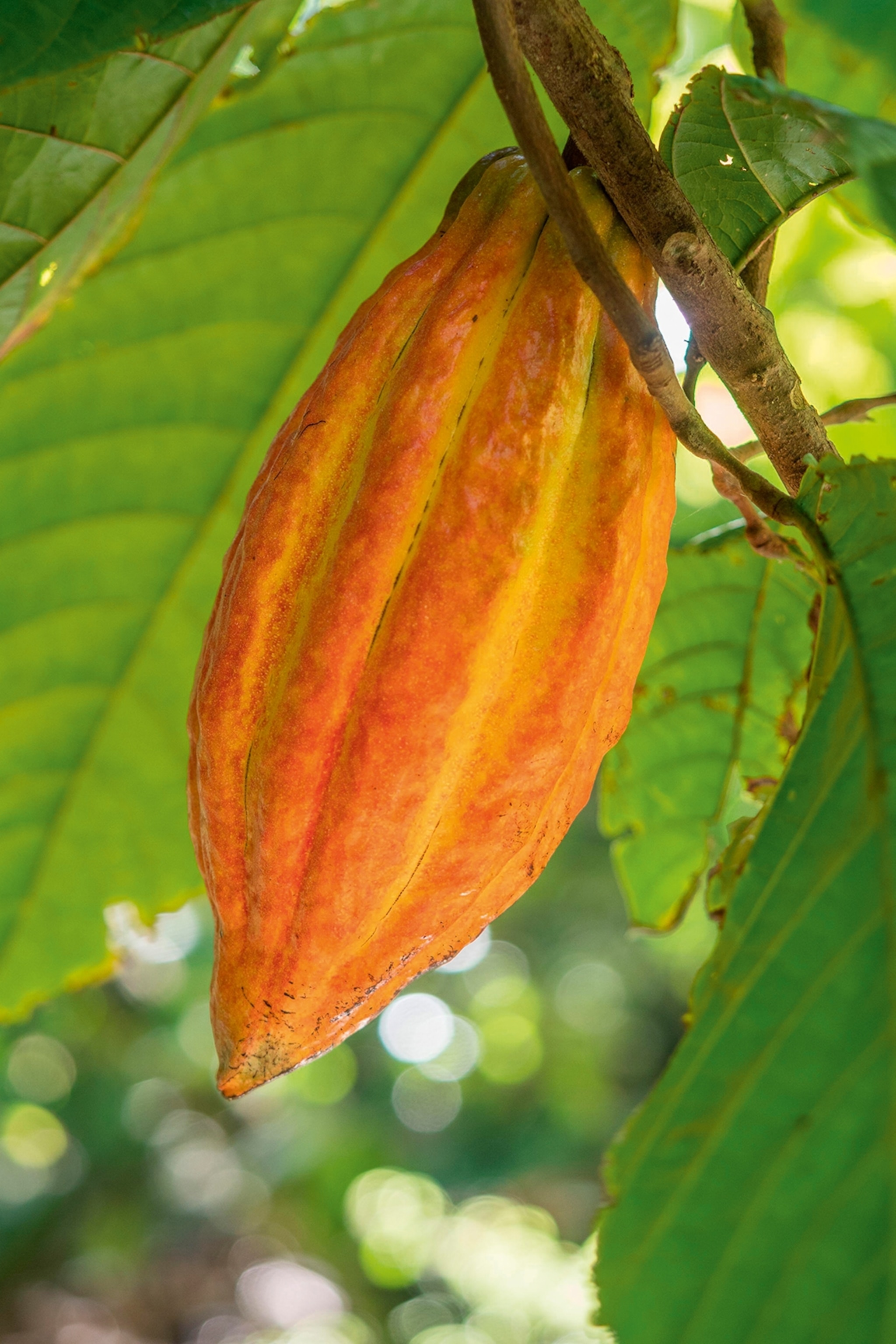
Cocoa has effective antioxidant and anti-inflammatory properties.
Photograph by Kuki Waterstone, Alamy Images
ItтАЩs with this last plant in mind that our tour ends, and itтАЩs time to endure the perilous expedition back up the mountain to keep a chocolate body wrap appointment. St Lucia is renowned for its cocoa plants, which grow in abundance across the island and are used for far more than food products. This luxurious treatment promises to hydrate skin and increase its elasticity, and encased mummy-like in chocolatey paste, my skin feels soothed and moisturised.
Thigh-deep in the sea the next day, I can feel the salty water undoing all the cocoa wrapтАЩs hydration work, but IтАЩm here to learn about the superfood of the moment: sea moss. My guide, Bervon Francis, from Kayak on the Bay, pulls our crafts along as we wade through the warm water towards Praslin Island, a nature reserve home to endemic species like the blue whiptail lizard.
The peaceful bay surrounding the island, on St LuciaтАЩs east coast, is dotted with sea moss farms. At first glance, they appear to be nothing more than a series of floating buoys and thin sticks rising above the waves, but I soon discover the submerged crops clinging to ropes just below the surface. These waters offer the ideal environment to grow sea moss.
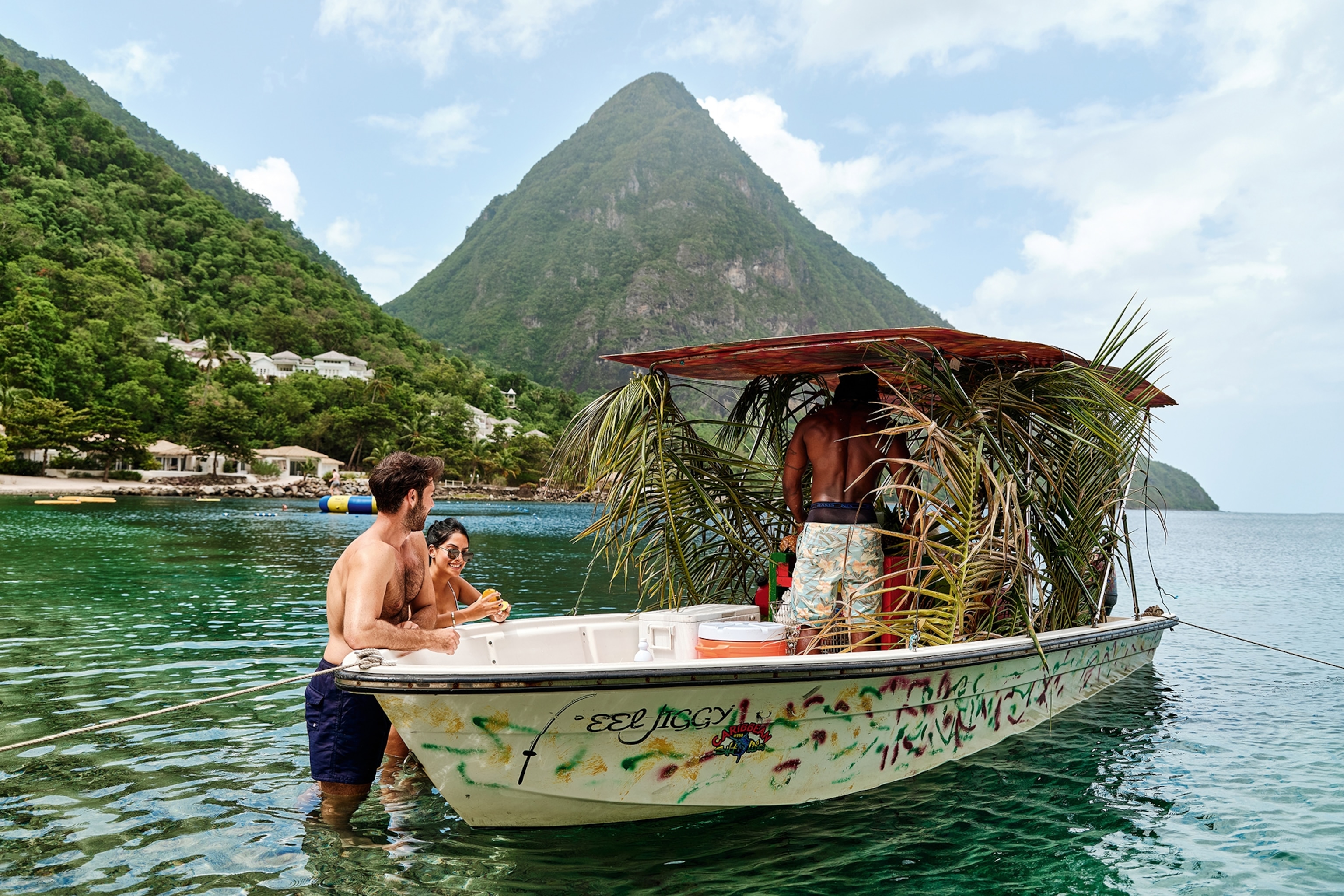
St. Lucia effortlessly combines wellness with exciting activities for a well-rounded experience.
Photograph by St. Lucia Tourism Authority
The sea splashes gently against our legs while we watch the local farmers harvesting the valuable produce, pulling it off the ropes and lowering it gently into dinghies floating beside them. Bervon explains that St Lucians pitch their poles and mark them with flags to claim their farmland. His father harvests sea moss every day from his 7,000sq ft plot in the bay, exporting most of his crop to England.
A type of algae or seaweed, sea moss is rich in vitamins, minerals and fibre, and is said to be beneficial for digestive health. ItтАЩs also thought to be helpful for energy levels due to its high iron content, and thyroid function as it contains iodine. тАЬHere, try it,тАЭ says Bervon, tossing me a piece of the slippery, brown-coloured seaweed. It pops when you bite into it and has a salty, umami taste. Perhaps it works better in a smoothie.
The power of the Pitons
St LuciaтАЩs emblematic Pitons rise regally from the Caribbean Sea, inviting climbers to summit their steep spires. WeтАЩre opting for something a little easier today though, the half-mile T├кt Paul Nature Trail. Located near the town of Soufri├иre on the west coast of St Lucia, the trail cuts through rich tropical forest and I spot several medicinal plants growing wild at the pathтАЩs edge as we walk. After a final, slightly sweaty ascent up the тАШstairway to heavenтАЩ, we emerge to a breathtaking, 360-degree view of the Gros Piton and the Petit Piton. From our vantage point up here, St Lucia spreads out before us in a sea of green, though with my newfound knowledge, I look at in a different light; as a wealth of plants with the power to heal.
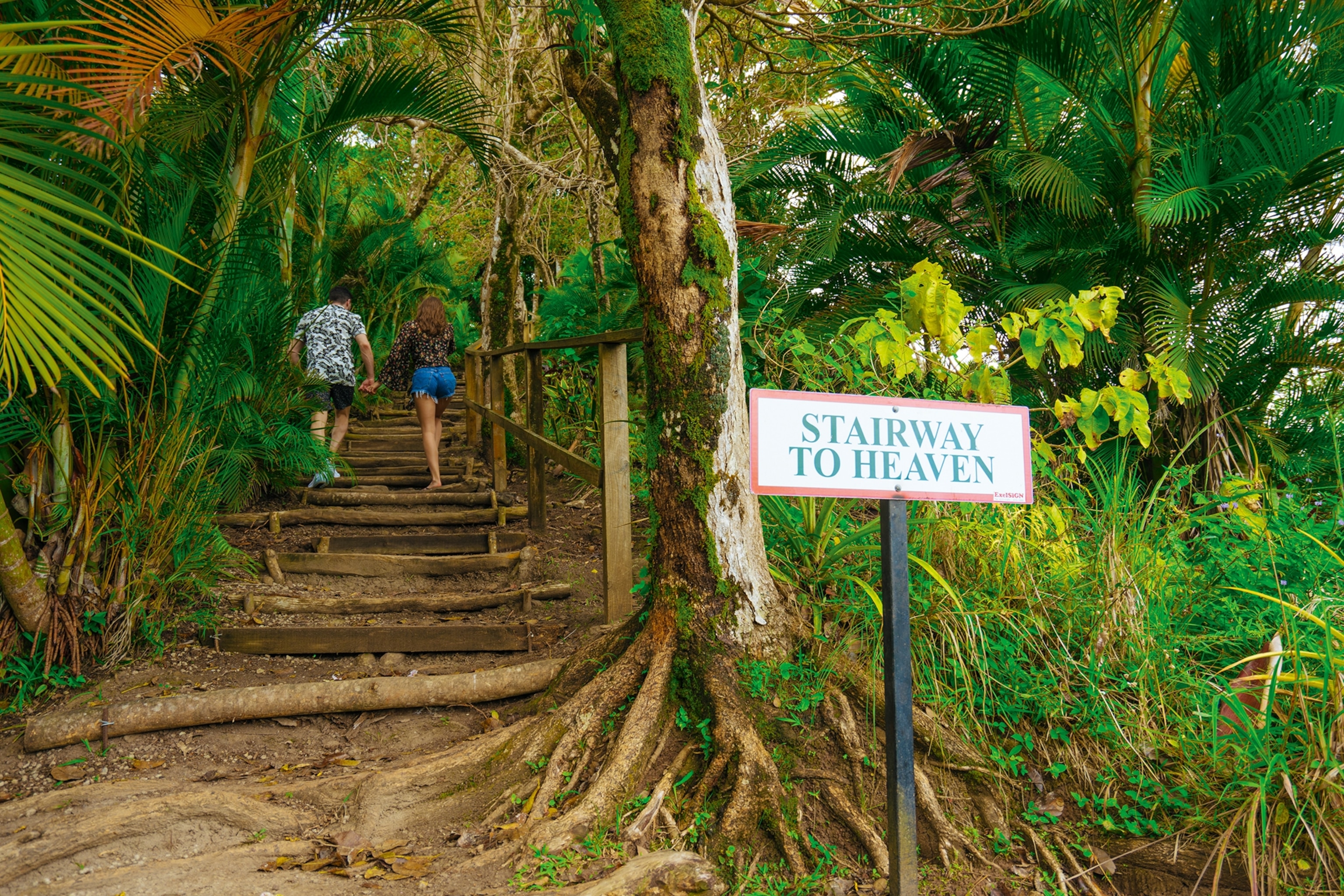
A hike up the Stairway to Heaven reveals views of St LuciaтАЩs Pitons.
Photograph by St. Lucia Tourism Authority
Back at sea level and just a short drive from the trailhead, the islandтАЩs active volcano bubbles and hisses, its pungent, sulphuric aroma filling the air and assaulting our senses. The steamy geothermal field, 1,000ft above sea level heats the mineral water from the rainforest, which flows down to the mud baths at Sulphur Springs.
These pools are a popular spot for locals looking to attain baby-soft skin, with the mud also thought to be beneficial for healing sunburn, eczema, arthritis and sore joints. Bathing in these pools is a weird and wonderful ritual. We scoop syrupy black sludge from a bucket and slather it all over ourselves, then stand still and let it dry for a few moments to soak up the nutrients, before sinking back into the hot, murky water of the mud bath.
The next day, beneath the shadow of Petit Piton, a soothing chorus of frigatebirds and finches fills the air as we meander along a little path. It leads us to a set of ancient petroglyphs etched into prehistoric rock and tucked away amid the lush foliage at Stonefield Villa Resort. Pancho de Caires, a larger-than-life character who oversees the gardens on the 26-acre property, strolls just ahead of us. The ancient site appears to be ceremonial, and Pancho tells us it was likely used for assisting with births, harnessing the energy of the Piton that looms above.
HeтАЩs a wealth of knowledge when it comes to plants, pointing out several used by St Lucians for wellness and healing, such as moringa, known locally as the тАШtree of lifeтАЩ. тАЬIn health stores, you can buy moringa capsules тАФ they dry the leaf and turn it into a powder,тАЭ Pancho says. тАЬIt can be cooked, too, or eaten raw in a salad. ItтАЩs incredibly good for you.тАЭ I learn that moringa is deemed to be one of the most nutrient-dense plants in the world, and among its myriad health benefits, itтАЩs thought to improve the immune system, promote liver and kidney function, assist digestion, support energy, reduce cholesterol and normalise blood pressure.
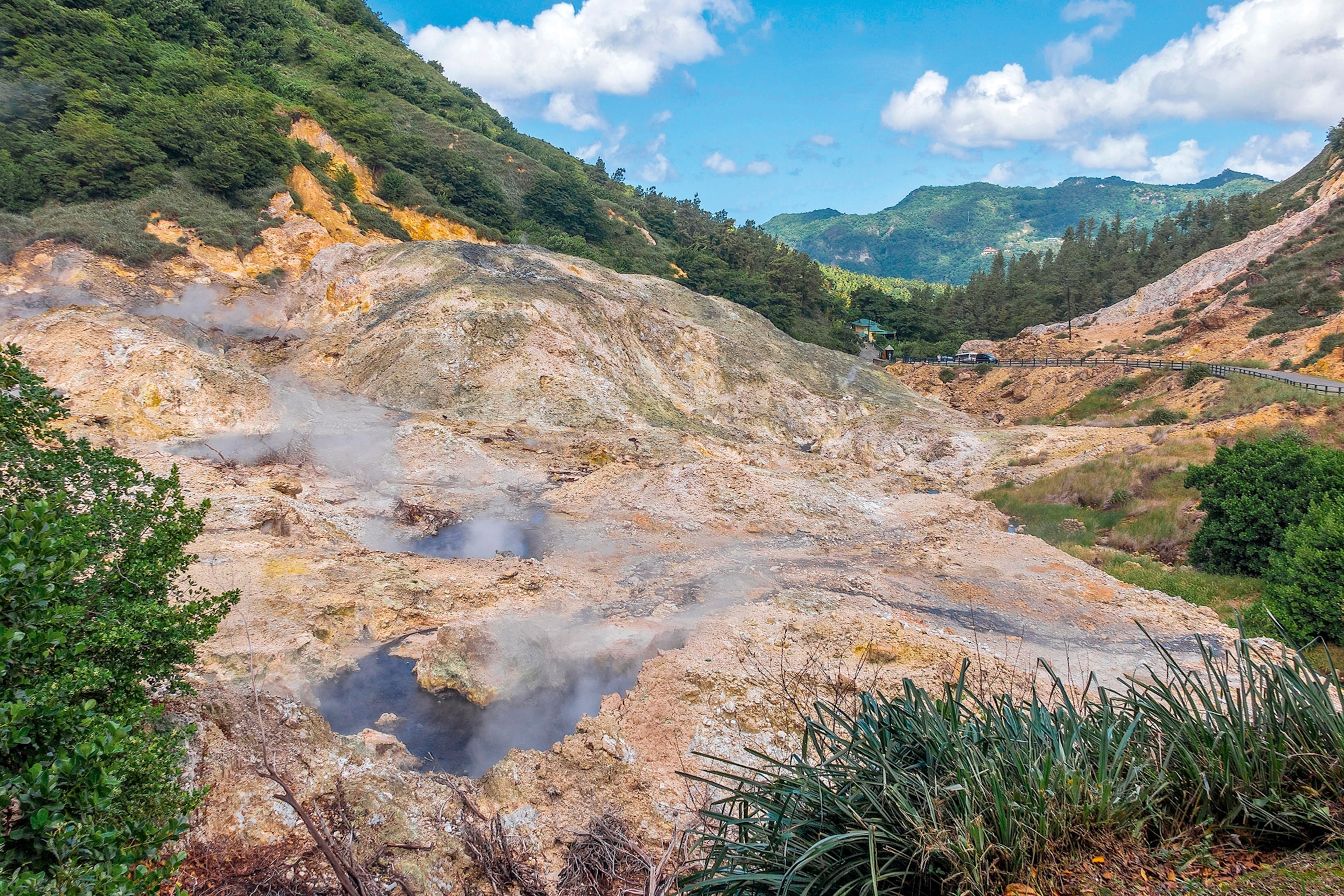
St LuciaтАЩs mud baths are popular with locals looking to attain baby-soft skin.
Photograph by Graham Mulrooney, Alamy Images
Golden-orange turmeric is next. тАЬYou dig it out to get the root,тАЭ Pancho explains, holding a grubby, thumb-shaped nugget aloft. тАЬI take it and add cayenne pepper, maybe a dash of lime, and drink it first thing in the morning for its anti-inflammatory benefits.тАЭ
Cheerful 27-year-old chef and culinary consultant Daryl Farrel joins us on our tour, picking produce from the garden as we amble along тАФ cocoa beans, or as the locals call them тАШjungle M&MтАЩsтАЩ, for a sweet treat; aloe vera for sunburn; patchouli flowers to put in a tea to treat the flu; and the locally loved soursop. тАЬWe use soursop in our breakfast fruit bowls or smoothies whenever itтАЩs in season,тАЭ Daryl explains. тАЬSome people boil the flower because it helps regulate your blood pressure, while the leaves are used in teas and supposedly help with cancer.тАЭ
The flowers blossoming around the garden are a reminder that my next stop is the on-site spa for a holistic hibiscus facial. Locally made products are infused with hibiscus and virgin coconut oil for this brightening and tightening beauty treatment. First, my face is cleansed, exfoliated, toned and steamed, before a face mask and moisturiser are applied. Considered to be тАШnatureтАЩs BotoxтАЩ, hibiscus is full of vitamin C to promote collagen production and help tighten the skin.
Feeling both relaxed and rejuvenated, we head out on a sunset cruise to see the Pitons from the sea with Mystic Man Tours. As the sun sinks below the horizon, the sky gradually transforms from blue to an alluring hue of yellow and purple. I gaze up at the islandтАЩs enigmatic twin peaks, which rise from the water like ancient pyramids. ItтАЩs no wonder St Lucia captivates visitors, I think тАФ this is a land that brims with medicinal plants and radiates a restorative energy. ItтАЩs an island that seems imbued with healing powers.
Published in the Spa & Wellness Collection 2025 by National Geographic Traveller (UK).
To subscribe to┬аNational Geographic Traveller┬а(UK) magazine click here. (Available in select countries only).
Source link : http://www.bing.com/news/apiclick.aspx?ref=FexRss&aid=&tid=67b89a69383642deb0f89e48236d98fb&url=https%3A%2F%2Fwww.nationalgeographic.com%2Ftravel%2Farticle%2Fon-the-botanical-wellness-travel-trail-in-st-lucia&c=1800361666704875485&mkt=en-us
Author :
Publish date : 2025-02-20 00:00:00
Copyright for syndicated content belongs to the linked Source.

